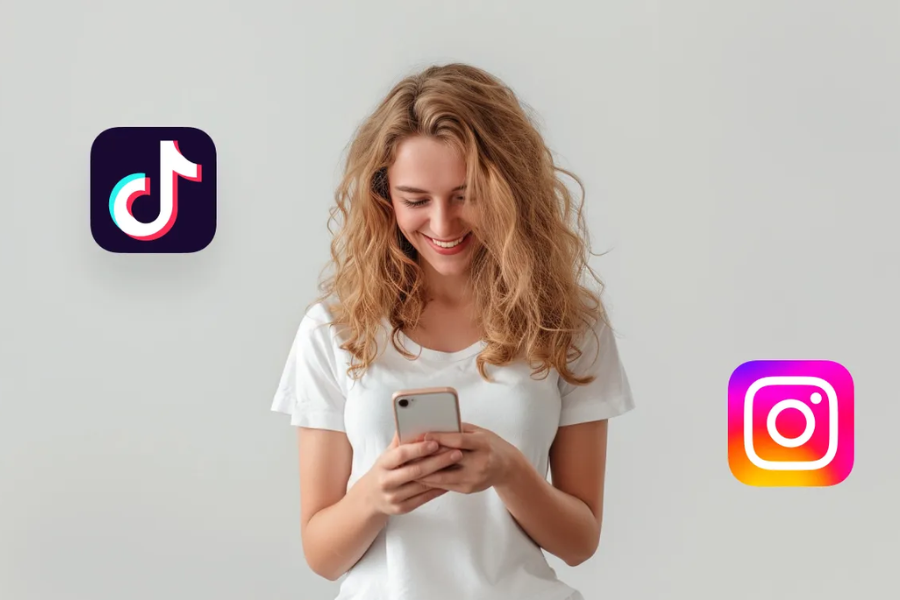How to Make Both Instagram and TikTok Work for Your Brand in 2025
In today’s fast-changing digital landscape, mastering just one platform is no longer enough. If your brand is serious about growth in 2025, it’s time to make both Instagram and TikTok work together as a powerful engine for visibility, engagement, and conversion. While each platform brings its own strengths, they also complement each other when used strategically.
This guide from MakeBoth com explains exactly how brands in 2025 can thrive on both platforms without splitting focus or resources. It’s not about choosing one over the other. It’s about integration, consistency, and content that speaks to each audience while building a unified brand presence.
Why Instagram and TikTok Still Matter
Instagram has matured into a platform that balances aesthetics, business features, and personal engagement. It’s where users go for curated content, longer brand relationships, and influencer discovery. With powerful tools like Stories, Reels, and Shopping, it remains an essential place for storytelling and conversions.
On the other hand, TikTok has changed how content is created and consumed. It thrives on authenticity, speed, trends, and entertainment. With its short-form video-first approach and unmatched organic reach, TikTok offers a unique opportunity to go viral and reach younger audiences.
In 2025, both platforms continue to hold their own, but brands that use them together unlock a far greater return.
Understand the Differences in Audience Behavior
To succeed, you must understand how users behave on each platform.
- Instagram users often scroll with intent. They seek inspiration, learn about brands, and engage with curated feeds. They are likely to visit your profile, click your link, and follow if they like what they see.
- TikTok users browse fast and expect entertainment. They discover brands through trends, humor, or storytelling, often by accident. Once hooked, they binge content or search for more—but only if it feels genuine.
By respecting these differences, you’ll craft content that feels native on each platform without losing brand consistency.
Tailor Content Without Duplicating It
One mistake many brands make is reposting the same exact video on both Instagram and TikTok. While cross-posting is efficient, context matters. Instead, use the same raw footage but tailor it to the platform:
- On TikTok, lean into viral audio, spontaneous cuts, raw footage, or behind-the-scenes snippets. Prioritize storytelling that hooks viewers in the first 2 seconds.
- On Instagram, edit videos more professionally. Add text overlays that match your aesthetic. Use Reels, but combine them with carousels, Stories, and captions that dive deeper into context.
This method maintains consistency while respecting the language of each platform.
Build a Two-Platform Strategy Around a Central Message
The key to making both platforms work together is to build a central campaign idea that translates across formats. Let’s say your brand is launching a new product line. Your campaign might include:
- Teasers and countdowns on Instagram Stories
- Behind-the-scenes creation process on TikTok
- Official product reveal via an Instagram Reel
- Unfiltered customer reactions or unboxings on TikTok
- Branded photos and influencer partnerships on Instagram’s main feed
This is how multi-platform synergy works. Every content type supports the same message but fits the natural behavior of each app.
Don’t Just Chase Trends. Start Them.
TikTok is often considered a trend-driven space, and yes, it offers tools to join challenges, remix sounds, and use trending formats. But real growth comes when your brand sets the tone instead of copying others.
Start your own challenge, introduce a unique filter, or build a mini-series. When it starts gaining momentum on TikTok, bring that momentum to Instagram by referencing the trend in a Reel or a Story highlight.
This kind of cross-platform content loop encourages users to follow you on both apps and engage with different layers of the same story.
Use Platform Features to Strengthen Brand Trust
Instagram offers features like Guides, Highlights, and Shopping tabs. Use them to showcase testimonials, product catalogs, or evergreen educational content.
TikTok now supports link-in-bio, profile shopping, and longer captions. Use these to convert views into site visits, especially when launching new collections or campaigns.
If someone finds your TikTok, they should want to visit your Instagram for deeper insight. If someone finds your Instagram, they should go to TikTok to see your personality in action. Each platform supports the other when content flows naturally between them.
Collaborate with Creators on Both Channels
Influencer marketing remains a top strategy in 2025, but creators must be chosen carefully. Seek micro or mid-tier influencers who already have a presence on both Instagram and TikTok. These creators can naturally bring your brand to life in formats that work across platforms.
Ask them to create TikToks that feel spontaneous while developing polished Instagram posts to support the message. Let them use their voice, not a script. Trust drives impact.
MakeBoth com often features creators who bridge platforms successfully. Study their approach and learn how storytelling can adapt without feeling forced.
Analyze Results Separately but Strategically
When reviewing your analytics, don’t combine data from both platforms blindly. TikTok metrics will often show spikes in reach and impressions, while Instagram may offer higher engagement rates and profile clicks.
Track separately, then review how each platform feeds your funnel.
- TikTok might be your discovery tool
- Instagram might be your conversion engine
Treat both roles as important and tailor your metrics accordingly. Engagement, follower growth, click-throughs, and shares should all be reviewed weekly and optimized monthly.
Consistency Wins in the Long Term
It’s tempting to abandon one platform when the other performs better. But consistency builds familiarity, and in 2025, brand loyalty is built through omnipresence.
Even if your TikTok doesn’t go viral every week or your Instagram doesn’t hit every metric, stay consistent. Post regularly. Stay on message. Adjust, but do not disappear.
Audiences now expect brands to live in both spaces. Going quiet on one creates gaps in trust and recognition.
Real Brand Examples Leading the Way
MakeBoth com has followed dozens of rising brands using this two-platform strategy. Some started on TikTok and used Instagram to look more professional. Others built first on Instagram, then used TikTok to bring in humor and new audiences.
The most successful ones did not see the platforms as competitors. They saw them as parts of a larger voice—a voice that echoes across the modern digital world.
Final Thoughts
Instagram and TikTok are not just tools. They are digital stages where brands perform, connect, and grow. In 2025, your audience is likely on both. Ignoring one limits your reach. Using both smartly expands your brand’s presence beyond the algorithm and into the hearts of your community.
MakeBoth com encourages creators, businesses, and marketers to build thoughtful two-platform strategies rooted in clarity, creativity, and authenticity. When Instagram and TikTok are used in harmony, the result is more than followers or clicks. It’s long-term brand relevance.






